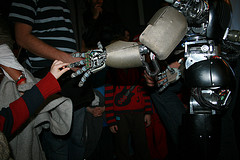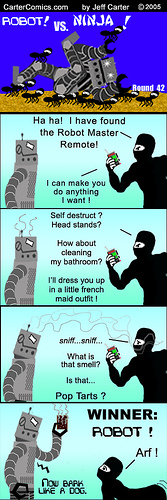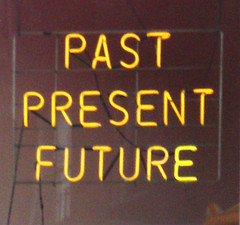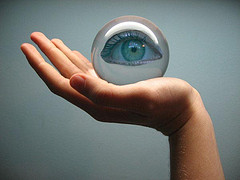|
|
|
Friday, April 1st, 2016
A Friday series exploring Startups and the people who make them go. Read all If the Shoe Fits posts here
 As a founder, do you have an ethical or moral responsibility to consider the ramifications of your product on society — globally, not just locally? As a founder, do you have an ethical or moral responsibility to consider the ramifications of your product on society — globally, not just locally?
In Numbers, a TV show that ran from 2005 to 2010, the central character, Charlie Eppes, was a young, prodigy mathematician. One storyline forced him to question his long held belief on his responsibility in innovation.
I always believed it was my duty to develop numerical tools and someone else’s to use them wisely.
Is that what you think?
In your drive for sales would you sell to any who could pay or would you scrutinize them to assure ethical usage?
Some companies do just that.
Data analysis powerhouse Palantir has been ultra-careful since it was founded.
Palantir can afford not to sell to just anybody — you have to believe in its values, too (…) Palantir once turned down a partnership with a tobacco company “for fear the company would harness the data to pinpoint vulnerable communities to sell cigarettes to,” CEO Alex Karp told Fortune.
Jad Saliba, Magnet Forensics’ founder/CTO and ex-cop is emphatic on the subject.
“The two areas I care most about are combating terrorism and child exploitation,” he says, adding that he hopes to keep his company on the side of the angels. “We spend a lot of time validating who we sell to … We sell to people who are going to use it ethically.”
Big Data in all its forms has enormous potential for good — and even larger potential for abuse.
And AI even more so.
From man’s earliest days, every new discovery has been a two-edged sword — fire can bestow life or death.
And while the final, future outcome of an innovation can’t be predicted, it should still be the responsibility of its creator, whether individual or company, to work to assure whatever it is is used responsibly.
Image credit: HikingArtist
Posted in Entrepreneurs, Ethics, If the Shoe Fits | No Comments »
Thursday, January 7th, 2016
 New year, new ideas — one would hope. New year, new ideas — one would hope.
Less ‘me too’ and more ‘me new’, or, as Matt Rosoff puts it, stuff that impresses his 5-year-old son.
By groundbreaking, I mean a technology that changed society, changed every other industry in the world. The World Wide Web was groundbreaking. The internet was groundbreaking. The personal computer was groundbreaking.
And before you write Rosoff off as a know-nothing consider Peter Thiel’s comment.
“We wanted flying cars, instead we got 140 characters.”
It’s nice to know my nobody-know-nothing opinion is in good company.
In the tech world IoT is supposedly the bright light on the horizon, but don’t hold your breath.
According to a study by Accenture of 28,000 consumers in 28 countries, the world is tired of gadgets and no interest in replacing what they have.
Worse for tech, the public is waking up to the fact that it doesn’t give a damn about people’s privacy, security or even safety as long as they buy — at least not until it’s forced to and then only enough to shut up the noise.
As Accenture puts it, companies must “ignite” the next five years of growth by coming up with products that “offer a compelling value proposition,” “ensure a superior customer experience,” and “build security and trust.”
Read the article. Digest Accenture results.
Then think about what you can build that would impress a 5-year-old—even a little.
Flickr image credit: centralasian
Posted in Entrepreneurs, Innovation | No Comments »
Monday, September 21st, 2015
Assuming, that is, you care at all about the future.
Sometimes I post about subjects not really business-oriented.
In this case, because 300 years isn’t all that long…
And disruption isn’t always progress.
Video credit: Business Insider
Posted in Personal Growth, Politics | No Comments »
Wednesday, November 13th, 2013

In a Halloween discussion With KG Charles-Harris (you should read it if you haven’t already) we talked about the possibilities of robots becoming self-willed. I said that might be an improvement over humans, but KG had a different take and it’s been stuck in my mind.
“True, but unfortunately children often absorb some of the worst traits of their parents…”
What bothers me is I don’t think that it’s true anymore for several reasons.
- Children absorb traits and values from their parents/family, but they are just as likely to absorb them from the media and even more likely these days to draw them from their peers.
- Kids may parrot their parents when young, but tend to move in their own direction more and more as they age and grow.
Although I know what KG means when he says “worst,” it is still a word with fluid meaning that is often dependent on one’s own values and beliefs.
This fluidity is particularly noticeable when looking at highly charged subjects, such as politics or religion, where one person’s theme is another’s anathema.
I’m also don’t really agree with Chris’ comment that the worst human trait is greed; another word whose meaning is not always what as expected.
Perhaps I’m too much of an optimist, but if (when?) robots do gain sentience I don’t see them moving in lockstep or necessarily following in our footsteps.
That hasn’t happened even with human generations, e.g., I doubt the Silent Generation saw their values reflected in the Boomers.
Actually, I think sentience, i.e, self-awareness, is a guarantee that there will be no more uniformity in a race of robots than there is in the human race.
Flickr image credit: jepoirrier
Posted in Culture, Ethics | 2 Comments »
Tuesday, November 12th, 2013
 Matt Mullenweg, founder/CEO of Automattic and creator of WordPress, runs a company valued at a billion dollars with a 190 employees who mostly work from home. Matt Mullenweg, founder/CEO of Automattic and creator of WordPress, runs a company valued at a billion dollars with a 190 employees who mostly work from home.
While he doesn’t believe there is one silver bullet that creates great culture, he does have an overarching belief that is easy for any boss with the correctly corresponding MAP to appropriate.
“It’s hard to reduce it down to one thing, but I think regardless of what tools you use to communicate if you give people autonomy to execute on something meaningful, and bias the environment to moving quickly, amazing things can happen.”
Unless you live on a different planet or alternative reality you will have heard that Twitter went public. Biz Stone is Twitter’s co-founder and says his most important lessons came from places he failed.
Such as Xanga…
“The lesson I learned was that company culture at the beginning is incredibly important. You have to tend to it…almost as much as you tend to your product.”
And then there’s Google.
“Google had its list ordered: Technology. People. I think the right order is: People. Technology. You have to think about people first and technology second.”
People. Culture.
Or you can look at it this way, people = culture.
Culture isn’t reality.
There can be no overall reality, because each person’s reality reflects back the sum total of their experiences from cradle to present.
The result is that culture needs a firm, but gentle, hand on the rudder and constant, consistent, intelligent course correction.
The most brilliant technology now or in the future can’t do that.
As long as there’s a human race perceptions between individuals will not be uniform.
Nope, not even the much-vaunted hyper-connectivity can come close to creating a true hive mind.
And I’m even willing to bet that if humans are supplanted by robots, as discussed here on Halloween, uniformity still won’t happen.
Flickr image credit: Josh Gee Photography
Posted in Compensation, Culture | No Comments »
Thursday, October 31st, 2013
 In the spirit of Halloween and associated scary stuff, I thought I’d share a conversation I had earlier this week with KG Charles-Harris, entrepreneur, EMANIO CEO, and good friend. In the spirit of Halloween and associated scary stuff, I thought I’d share a conversation I had earlier this week with KG Charles-Harris, entrepreneur, EMANIO CEO, and good friend.
It started when I sent him this article showcasing how little has changed over the last 40 years.
Miki: “The crappy human race never learns…”
KG: “That’s why I believe the machines will take over soon. The developments in artificial intelligence, robotics, bio- & nanotechnology, among other, are ensuring that machines are becoming self-healing and self-replicating. And consciousness is the next frontier.
‘The Internet of Things’ is just a fancy way of saying that all machines and devices will be interconnected and share data and resources. When consciousness comes, it will spread instantaneously across this network. What happens to humans as a result has been depicted in several movies and books, including Terminator and The Matrix.
Unfortunately I believe these are optimistic versions of what will become reality. Those of us who have studied biology and ecology know that when a new species is added to an ecosystem it invariable leads to mass kill off and mass extinctions of previously prominent species. We are in the process of creating our children.
Miki: “I just think our poor planet would be better off sans people and electronics. Maybe give Earth 10,000 or so years to heal and let a better species evolve.”
KG: “Well, if my theories are correct, we’ll soon have a planet without humans. However, since it will be guided by “things” created by humans, it will likely not be better for nature than now, but worse…”
Miki: “I won’t be around to see it, but I can hope that both species go the way of the dodo bird…”
KG: “Unfortunately, I believe that we both may be alive for this occurrence. In fact, it may have happened but we have no knowledge of it. It may have happened in a lab environment without contact with the internet or the outside world.”
As often happens, once a subject pops up you suddenly see it everywhere.
The first was an article about Vicarious, a startup creating software that thinks and acts like a human brain. But when I sent the link to KG, he replied that Google, Yale, MIT and Syntience are further along.Then I found that DARPA is on the same path and other companies are creating robots that look more like us.
Miki: “If they have true consciousness they will think for themselves, which means they won’t necessarily follow in human footsteps.”
KG: “True, but unfortunately children often absorb some of the worst traits of their parents…”
How true.
And sad, because Isaac Asimov provided the solution more than 70 years ago when he created the Three Laws of Robotics.
- A robot may not injure a human being or, through inaction, allow a human being to come to harm.
- A robot must obey the orders given to it by human beings, except where such orders would conflict with the First Law.
- A robot must protect its own existence as long as such protection does not conflict with the First or Second Law.
Not that they will be programmed into the next dominant species we are racing to create.
Flickr image credit: Jeff Carter
Posted in Entrepreneurs | 8 Comments »
Thursday, September 22nd, 2011
“All great companies have a rowboat mentality. You row hard, but you’re still always looking behind you to the past.” —Howard Stringer, CEO, Sony
 Many young entrepreneurs believe having no history is their greatest advantage—and to some extent it is. Many young entrepreneurs believe having no history is their greatest advantage—and to some extent it is.
But it’s also their greatest dilemma.
Having history doesn’t mean you are locked into considering only the past, instead of facing forward and engaging the future—although many companies do exactly that. (It’s called resting on your laurels and people, as well as companies, are guilty of doing it.)
By the same token, fixing your eye strictly on the future, with no consideration of past actions, yours and others, can cause you and your company to fall flat on its face.
You need a mix of past and future to know what is worth keeping/emulating and how to take it to the next level; when and how [whatever] should be tweaked for optimum performance in the current situation; and when to jettison it and what to replace it with.
Also, as with most athletic endeavors, knowing you have accomplished X in the past gives you more courage and belief that you can accomplish Y in the future.
Finally, there is much wisdom embodied in the old saying, “Profit from the mistakes of others, you don’t have time to make them all yourself.”
Flickr image credit: fosco lucarelli
Posted in Entrepreneurs, If the Shoe Fits | No Comments »
Friday, August 27th, 2010
Create
your future,
because
you can’t
edit your past.
This is one of those rules that everybody knows, but keep trying to circumvent anyway. In fact, people are often so busy editing they forget to create.
What they don’t get is that when you spend your energy on creation and execution you won’t need to worry about editing.
Posted in Miki's Rules to Live by | 2 Comments »
Thursday, December 24th, 2009
 Dan McCarthy had a terrific post on why choosing leaders is a gamble—be sure to read the comments. Dan McCarthy had a terrific post on why choosing leaders is a gamble—be sure to read the comments.
We see the idiocy of assuming that past performance is always a good predictor of the future all the time, but it seems especially true at senior levels.
First, there is the penchant for identifying ‘high potential’ starting in kindergarten and providing lots of extra training and coaching, while ignoring those who may be late bloomers or less obvious (read quieter).
Then there’s the Peter Principle, which is not only alive and well, but functioning even more efficiently today than it was when Laurence J. Peter first described it back in 1970.
We relish looking at the past to predict the future, thus choosing to ignore all extenuating circumstances and surrounding factors that played a role in the person’s performance.
We forget, or ignore, that
- one manager’s star is another manager’s bomb;
- the skills needed to take advantage of an economic expansion are very different from those needed in a downturn; and
- turmoil or an ongoing crisis in a person’s personal life often impacts their performance at work.
Last, but not least, we need to get over our love affair with the idea of the hero-leader who, with a wave of the hand, can part the seas and eliminate obstacles.
Your comments—priceless
Image credit: Valerie Everett on flickr
Posted in Business info, Culture, Leadership's Future | No Comments »
Friday, December 4th, 2009

It’s been awhile since I posted one of my rules and this seems like a good time to give you another.
At first look it may seem to be targeted to a teen or twenty-something audience, but I don’t think so.
I think it’s applicable to anyone breathing.
It’s what you learn
after
you know it all
that counts!
Image credit: Mark Brannan on flickr
Posted in Miki's Rules to Live by, Personal Growth | No Comments »
|
 Subscribe to
Subscribe to
MAPping Company Success
About Miki 
Clarify your exec summary, website, etc.
Have a quick question or just want to chat? Feel free to write or call me at 360.335.8054
The 12 Ingredients of a Fillable Req
CheatSheet for InterviewERS
CheatSheet for InterviewEEs™
Give your mind a rest. Here are 4 quick ways to get rid of kinks, break a logjam or juice your creativity!
Creative mousing
Bubblewrap!
Animal innovation
Brain teaser
The latest disaster is here at home; donate to the East Coast recovery efforts now!
Text REDCROSS to 90999 to make a $10 donation or call 00.733.2767. $10 really really does make a difference and you'll never miss it.
And always donate what you can whenever you can
The following accept cash and in-kind donations: Doctors Without Borders, UNICEF, Red Cross, World Food Program, Save the Children
*/
?>About Miki
About KG
Clarify your exec summary, website, marketing collateral, etc.
Have a question or just want to chat @ no cost? Feel free to write
Download useful assistance now.
Entrepreneurs face difficulties that are hard for most people to imagine, let alone understand. You can find anonymous help and connections that do understand at 7 cups of tea.
Crises never end.
$10 really does make a difference and you’ll never miss it,
while $10 a month has exponential power.
Always donate what you can whenever you can.
The following accept cash and in-kind donations:
|
 As a founder, do you have an ethical or moral responsibility to consider the ramifications of your product on society — globally, not just locally?
As a founder, do you have an ethical or moral responsibility to consider the ramifications of your product on society — globally, not just locally?



 New year, new ideas — one would hope.
New year, new ideas — one would hope.
 Matt Mullenweg, founder/CEO of Automattic and creator of WordPress, runs a company valued at a billion dollars with a 190 employees who mostly work from home.
Matt Mullenweg, founder/CEO of Automattic and creator of WordPress, runs a company valued at a billion dollars with a 190 employees who mostly work from home.
 Many young entrepreneurs believe having no history is their greatest advantage—and to some extent it is.
Many young entrepreneurs believe having no history is their greatest advantage—and to some extent it is. Dan McCarthy had a terrific post on
Dan McCarthy had a terrific post on 

